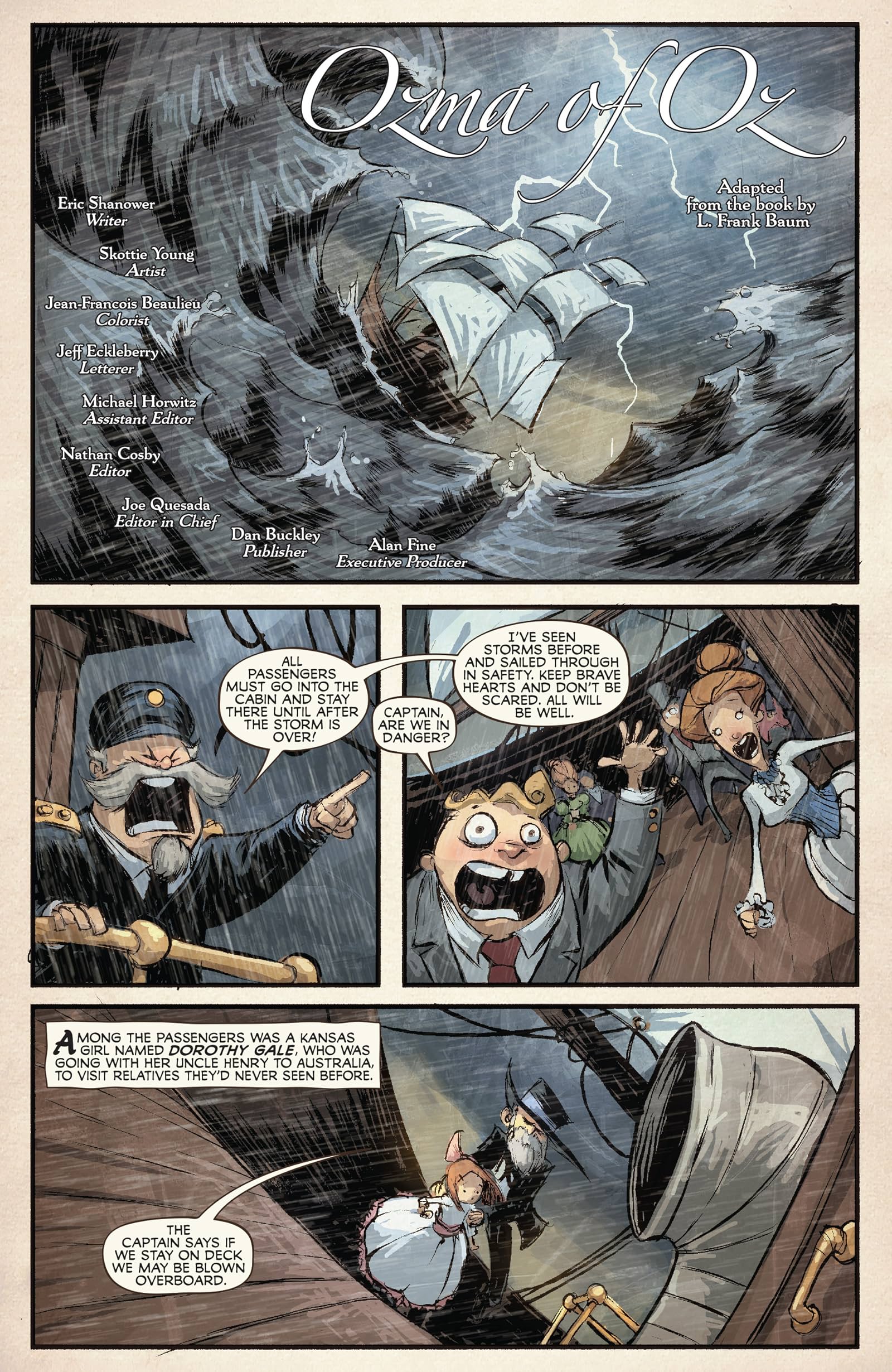Writer: Eric Shanower
Artist: Skottie Young
Adapted from L. Frank Baum
Marvel Comics, 2010
SOMETIMES A CLASSIC APPEARS on first blush, as some folk songs composed in past decades that felt familiar like old clothes, and sometimes did come from an earlier era, revived by a new artist in a new generation. Some artifacts may have passed just so from mouth to mouth since the stone age, finding new expertise and renewed hunger along the way. Handling the collected paperback edition of OZMA OF OZ, issues 1–8, gave me this classic impression from the start.

This book is third in a series of six volumes published by the same team from 2005 to 2013, reproducing Frank Baum’s original Oz books, subsequently collected in a 2014 omnibus edition. The Oz books started with the famous The Wizard of Oz in 1900. Writer Eric Shanower retells the children’s story with genius.
The tale advances one simple step at a time, engaging in small talk all the while to expose the character of the characters. Dorothy is off on adventure before you know it, sublimely calm, wading ashore with a sidekick talking chicken. The tale continuously makes astonishing nonsense look real, like the talking chicken Bill, renamed Billina, then a mechanical man called Tik-tok, and meeting a spoiled princess who changes heads for every occasion. Soon enough Dorothy is happily reunited with the oddly mustachioed Tin Woodman with a sheriff’s badge, and Scarecrow and Cowardly Lion, and meets Ozma the new ruler of Oz, Hungry Tiger, and a Sawhorse brought to life who looks like a horse but has no brains. The text often moves in rhymes and near rhymes as in song lyrics.

The angular art of Skottie Young gestures and howls. Big mouths gape. The style perfects a model of expressionism where feelings predominate. At times you can almost hear Dorothy speaking, marchers marching, and bongs bonging. The expressiveness is mightily enhanced by the color art of Jean-Francois Beaulieu, also magnificently done, portraying bright sunshine colors outside and rich curtains of color inside. The expressive style is like a lightning crash, making reality look like a cartoon and feel more real at the same time. This accomplishment fits a primary theme in the story: always aiming to be useful, or at least ornamental. The artists perform heavy work on both counts.

Teeth are noticeably small, sensitive to frightening children, except for some fiendish displays by the queer Nome King, and in some muted ways with the more dangerous Hungry Tiger, who claims “It wouldn’t be right” to eat Billina, the little chicken, and Dorothy sternly forbids it anyway, but for one second the hot breath comes close in a big toothy smile and bulging green eyes fix on the bird. Most menacing.
Peace is a prize. The best results occur when everyone on all sides get what they want. In a few cases heads have to get bumped and wars won as a last resort. No loose end is missed along the way. The fact the Hungry Tiger really wants to eat the chicken, for example, is faced head on. Contrary views are raised and clash, and actions remain believable though fantastic. The tinker-toy plot never interferes with the genuine feeling of drama among the characters.
At the end we briefly see the famous sorceress Glinda the Good, who helps Dorothy find her way home again. On the final page, a hearty laugh stamped approval. Practical Dorothy portrayed here, a girl shaped by the ages (and Kansas) and making her own destiny, may be my new superhero.

